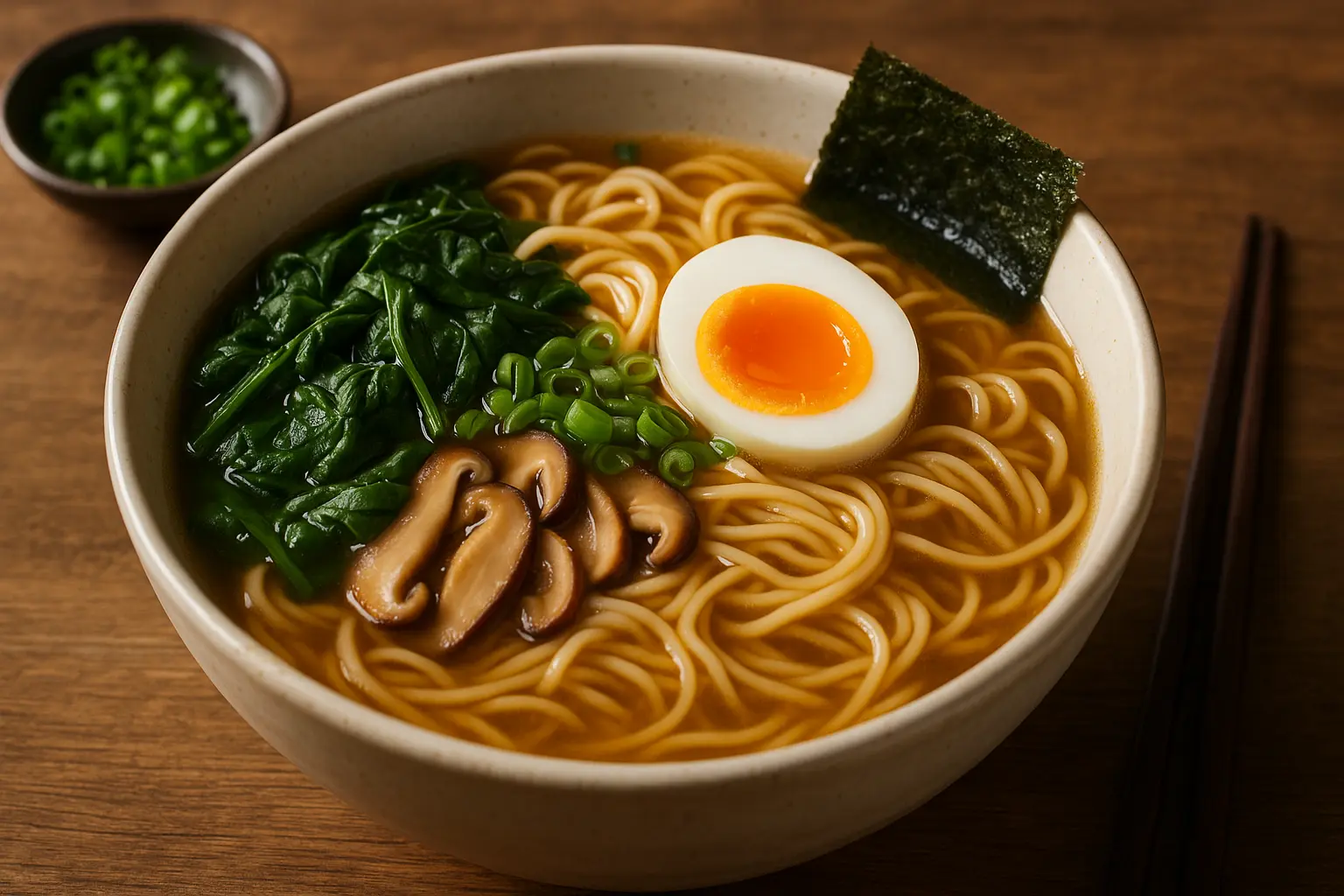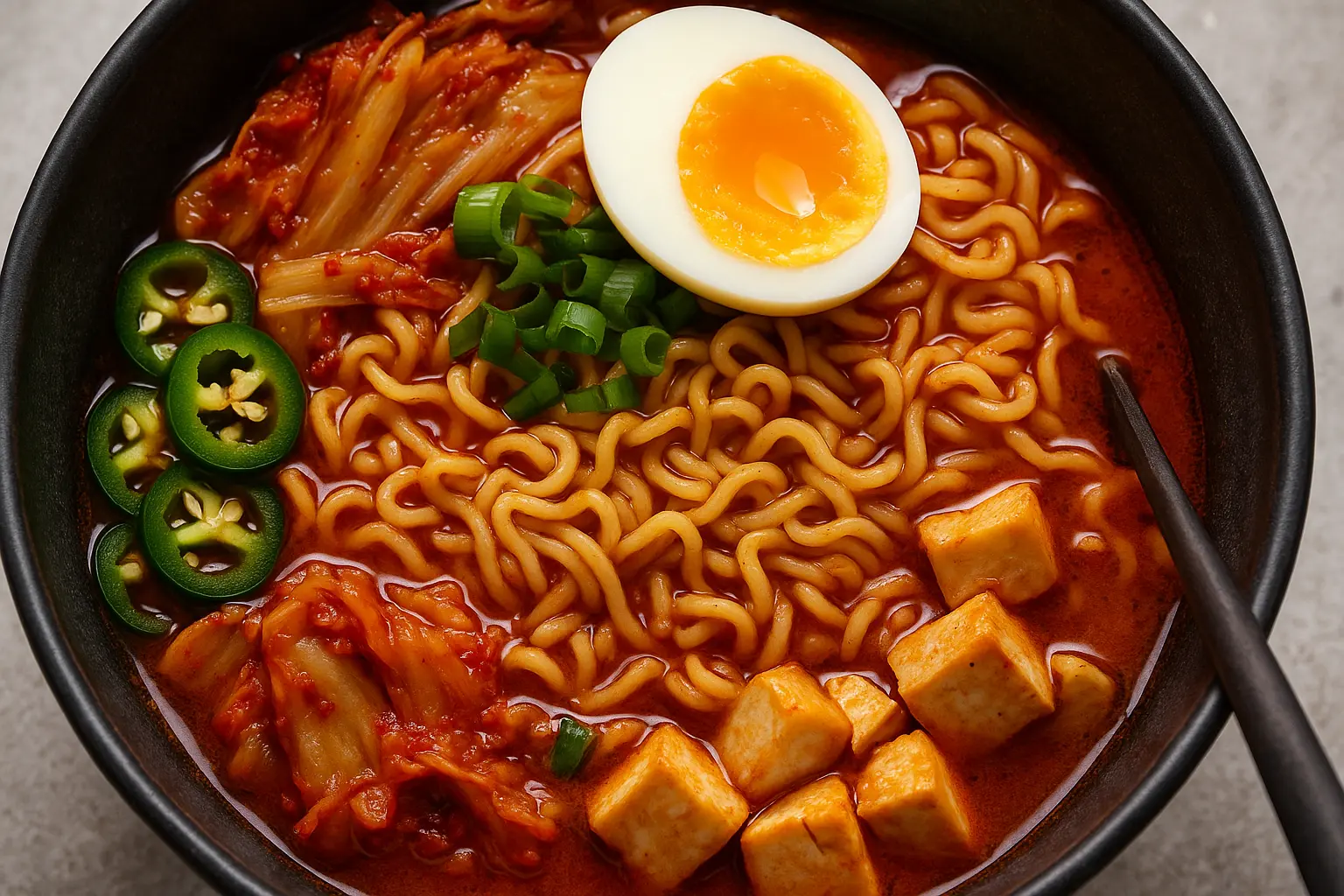Japanese cuisine is beloved worldwide for its balance of flavor, freshness, and comfort. Among its many treasures, noodle soups stand out as the ultimate combination of heartiness and simplicity. A steaming bowl of ramen, udon, or soba can instantly uplift your mood, warm you on a chilly evening, and even become your go-to weeknight dinner.
But here’s the good news: you don’t need to spend hours in the kitchen or hunt down hard-to-find ingredients. With just a few pantry staples and fresh add-ons, you can craft quick Japanese noodle soups at home that taste authentic and satisfying.
This guide explores everything you need to know—from noodle types, broths, toppings, and variations to easy recipes that fit into your busy schedule. Let’s dive in.

Why Japanese Noodle Soups Are Perfect for Home Cooking
Unlike many Western soups that simmer for hours, Japanese noodle soups can be created quickly while still delivering depth of flavor.
- Versatility: You can adapt them to vegetarian, vegan, or meaty versions.
- Quick cooking time: Most noodle varieties cook in under 10 minutes.
- One-bowl meals: With noodles, broth, and toppings, you get protein, carbs, and veggies in one dish.
- Budget-friendly: Pantry staples like soy sauce, miso paste, or dashi go a long way.
The Main Types of Japanese Noodles
Before diving into recipes, let’s understand the noodles commonly used in Japanese soups:
1. Ramen Noodles
- Thin, wheat-based noodles with a springy bite.
- Pair well with bold broths like miso, shoyu (soy sauce), or tonkotsu (pork-based).
- Easily found in instant packs, but fresh or frozen versions are best for home soups.
2. Udon Noodles
- Thick, chewy wheat noodles.
- Ideal for mild, clear broths like kakejiru (soy-dashi base).
- Comforting and filling—perfect for cold weather.
3. Soba Noodles
- Thin noodles made from buckwheat (sometimes blended with wheat).
- Nutty flavor and lighter texture.
- Can be served hot in broth or cold with dipping sauce.
4. Somen Noodles
- Very thin, white wheat noodles.
- Often eaten chilled in summer but also delicious in hot broths for a light soup.
The Foundations: Japanese Soup Broths
The magic of noodle soups lies in the broth. Here are the common bases you can easily recreate at home:
1. Dashi (Japanese Stock)
- The backbone of Japanese soups.
- Made from kombu (dried kelp) and katsuobushi (bonito flakes).
- Quick to prepare—simmer for 10 minutes and strain.
2. Shoyu Broth
- Soy sauce-based broth.
- Light, salty, and umami-rich.
- Great with ramen or soba.
3. Miso Broth
- Made by whisking miso paste (fermented soybean paste) into hot dashi.
- Creamy, savory, and comforting.
- Perfect for miso ramen or udon.
4. Shio Broth
- Salt-based broth, clear and delicate.
- Lets the natural flavor of the noodles and toppings shine.
Essential Toppings for Noodle Soups
Japanese noodle soups shine because of their toppings. Mix and match based on your preference:
- Proteins: Boiled eggs, chicken slices, pork belly, tofu, prawns.
- Vegetables: Spinach, bok choy, mushrooms, bean sprouts, green onions.
- Flavor boosters: Nori (seaweed), sesame seeds, chili oil, pickled ginger.
Quick & Easy Japanese Noodle Soup Recipes
Now, let’s roll up our sleeves and make some homemade soups in under 30 minutes.
1. Quick Miso Ramen Bowl
Serves: 2 | Time: 20 minutes
Ingredients:
- 2 packs fresh ramen noodles
- 4 cups dashi (or vegetable broth)
- 3 tbsp miso paste (red or white)
- 1 tbsp soy sauce
- 1 tbsp sesame oil
- 1 boiled egg, halved
- 1 cup spinach leaves
- 1/2 cup mushrooms (shiitake or button), sliced
- Green onions, sliced
Instructions:
- Cook noodles separately according to package directions. Drain.
- In a pot, heat dashi and whisk in miso paste. Add soy sauce and sesame oil.
- Add mushrooms and simmer for 5 minutes.
- Divide noodles into bowls. Ladle hot miso broth over.
- Top with spinach, eggs, and green onions.
Tip: Add chili oil for a spicy kick.
2. Udon in Soy-Dashi Broth
Serves: 2 | Time: 25 minutes
Ingredients:
- 2 servings udon noodles (fresh or frozen)
- 4 cups dashi
- 3 tbsp soy sauce
- 2 tbsp mirin
- 1/2 tsp sugar
- Toppings: tempura shrimp, boiled egg, nori, scallions
Instructions:
- Cook udon noodles until tender.
- In a pot, combine dashi, soy sauce, mirin, and sugar. Heat gently.
- Place noodles in bowls, pour broth over.
- Add toppings of your choice.
Tip: Frozen udon retains its chewy texture better than dried.
3. Soba Noodle Mushroom Soup
Serves: 2 | Time: 20 minutes
Ingredients:
- 200g soba noodles
- 4 cups vegetable broth
- 2 tbsp soy sauce
- 1 tbsp rice vinegar
- 1 cup shiitake mushrooms, sliced
- 1/2 cup bok choy, chopped
- Sesame seeds for garnish
Instructions:
- Cook soba noodles, rinse under cold water to prevent sticking.
- In a pot, simmer broth, soy sauce, and vinegar.
- Add mushrooms and bok choy. Cook 5 minutes.
- Divide soba noodles into bowls and ladle soup over.
- Garnish with sesame seeds.
Tip: Add tofu cubes for extra protein.
4. Spicy Somen Soup
Serves: 2 | Time: 15 minutes
Ingredients:
- 200g somen noodles
- 3 cups chicken or veggie broth
- 1 tbsp soy sauce
- 1 tsp chili paste (like gochujang or sambal)
- 1 boiled egg, halved
- Green onions, chopped
Instructions:
- Cook somen noodles quickly (about 2 minutes). Drain.
- Heat broth, stir in soy sauce and chili paste.
- Place noodles in bowls, top with broth.
- Add egg and green onions.
How to Customize Your Noodle Soups
- Vegetarian/Vegan: Use kombu-based dashi, add tofu and vegetables.
- Gluten-Free: Opt for 100% buckwheat soba noodles.
- High-Protein: Include chicken breast, prawns, or soft-boiled eggs.
- Budget-Friendly: Stick with miso paste, soy sauce, and frozen veggies.
Tips for Making Japanese Noodle Soups at Home
- Cook noodles separately to prevent them from turning soggy in broth.
- Don’t boil miso paste—it loses flavor. Add it at the end of cooking.
- Layer umami flavors: Combine soy sauce, miso, and dashi for depth.
- Freeze dashi stock in portions for instant soup bases.
- Experiment with toppings—leftover veggies, boiled chicken, or even kimchi.
Meal Prep & Storage
- Broth: Make in advance, store in fridge for 3 days or freeze up to 2 months.
- Noodles: Cook fresh when serving; they lose texture if stored in broth.
- Toppings: Keep prepped veggies and eggs in airtight containers for quick assembly.
Bringing Japan Into Your Kitchen
Making quick Japanese noodle soups at home is about comfort, creativity, and balance. Whether you’re craving the richness of miso ramen, the heartiness of udon, or the nutty lightness of soba, these soups are weeknight heroes.
By mastering the basics—noodles, broth, and toppings—you unlock endless variations that suit every mood, season, and dietary preference.
So next time you need a cozy, nourishing meal, skip the takeout and whip up your own steaming bowl. Japan’s soul-warming flavors are just 20 minutes away, right in your kitchen.
Leave a comment
Your email address will not be published. Required fields are marked *




















